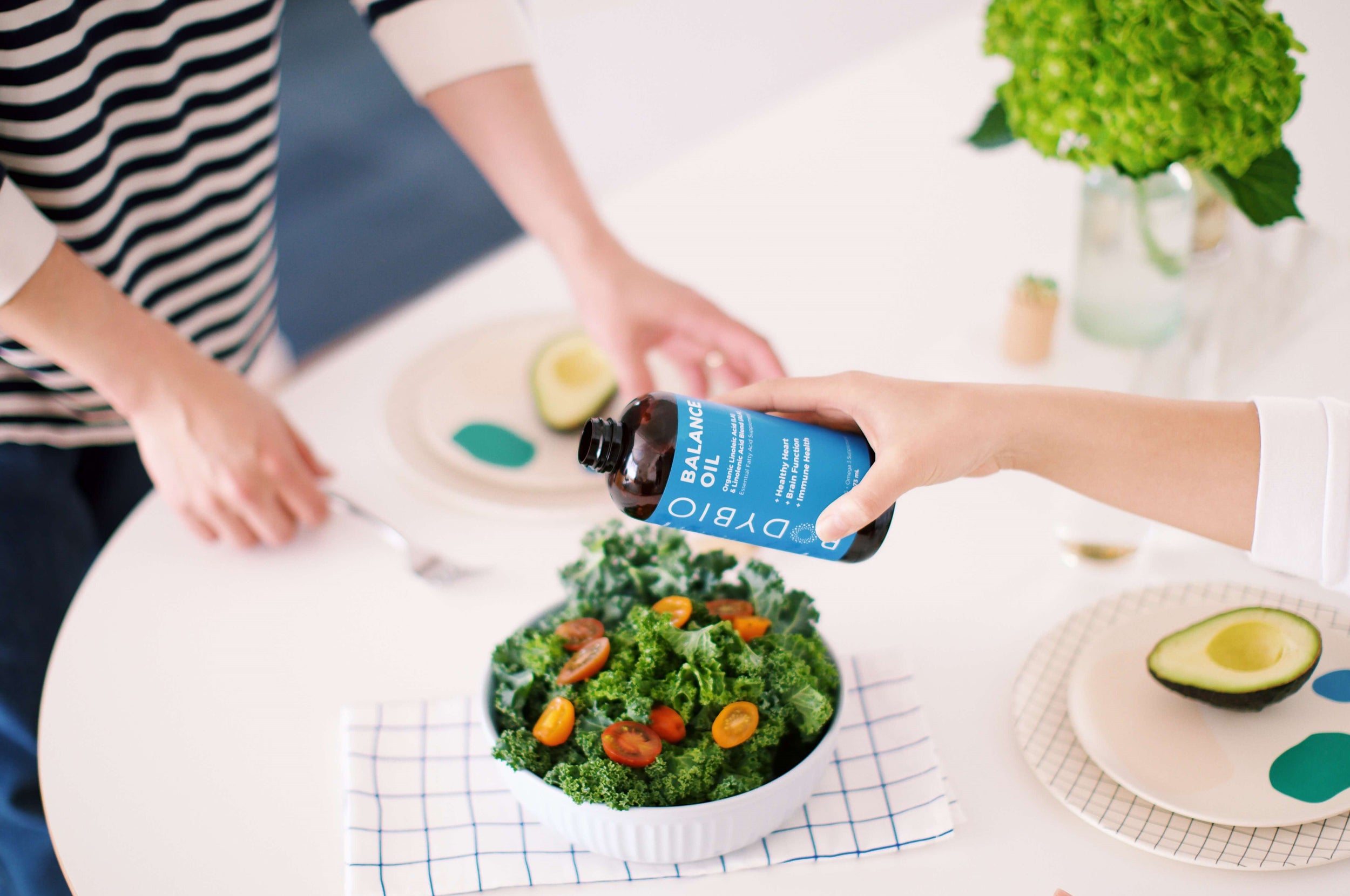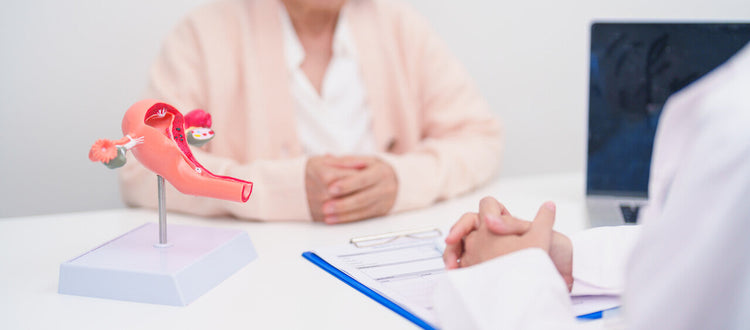Bring life to your meals with these easy EFA and PC infused recipes
@justinestenger shares some of her favorite ways to add EFA’s and PC into your food.
By now I hope most of you understand the importance of essential fatty acids and also the importance of phosphatidylcholine. Let’s do a quick overview - essential fatty acids cannot be made by the body, so it is critical that we get them from the foods we eat. Phosphatidylcholine is a phospholipid that is a major building block of membranes, also an essential nutrient that we must either get from food or from the components of the food we eat. This lipid is a key player in maintaining structure, integrity, stability, and flexibility of our cell membranes*. The integrity of our cell membranes is the foundation of our health.
Let’s start by talking about Linoleic Acid – one of the major omega 6 fatty acids. Linoleic acid, like all essential fatty acids, is considered essential because it cannot be synthesized by the body. One important function of Linoleic acid is for mitochondrial/energy support because a major phospholipid in mitochondria is cardiolipin that requires 4 Linoleic fatty acid tails. Downstream from linoleic acid, created by desaturation and elongation, are gamma-linolenic acid (GLA found in evening primrose oil and organ meats), and dihomo-gamma-linolenic acid (DGLA and an eicosanoid). Another major omega 6 fatty acid is arachidonic acid (AA, found in egg yolk, butter, cream, meat fat). All of these omega 6 fatty acids play a role in gene regulation inside the cell. WOW, if that’s not important, I am not sure what is! AA is especially plentiful in the brain, and is of such importance that it is essential to human brain development. After we have been breastfed, Arachadonic acid levels from the diet drop dramatically. DGLA and AA are eicosanoids which are precursors to prostaglandins that evolve into important mediators for immunity and immune response. AA forms Lipoxins, one of the anti-anti-inflammatory lipid mediators we are starting to hear so much about. Omega 3 fatty acids form resolvins, protectins, and maresins. We need to ensure that we are getting enough omega 6 fatty acids in balance with omega 3 fatty acids from the food that we eat. That takes some work. I am going to help you with a plan to ensure that you are getting in adequate amounts of Linoleic acid, because this critical fatty acid has been depleted in our food supply without our even knowing it by the replacement of high-oleic acid hybrid oils rather than seed oils that are naturally high in essential fatty acids. Now to the fun part - I am going to show you some recipes so it’s seamless for you to incorporate this fatty acid at every meal.
My favourite way to ensure that I am getting in optimal levels of Linoleic acid is from BodyBio’s Linoleic acid-rich safflower oil. I always have a delicious dressing waiting for me in the fridge to pour on my greens, steamed vegetables, or on the protein I consume. Below is a dressing that I encourage you to try to ensure you are consuming this essential fatty acid with your meal made with organic, whole food ingredients. This dressing is especially rich in Linoleic acid because the base is made with raw pumpkin seeds - pumpkin seeds are beautifully rich in Linoleic acid.
Pumpkin Seed Rosemary Dressing
Ingredients
1 cup raw, organic pumpkin seeds
1 clove garlic
1 tsp sea salt
1 lemon, juiced
3 springs rosemary - stems removed
1 bottle of BodyBio High Linoleic safflower oil
Procedure
1. Combine all ingredients into a high powered blender and blend until smooth. Store in a dark, glass container for up to 2 weeks in the fridge.
Now let’s move on to the prized omega 3’s. Omega 3 fatty acids are put on the highest pedestal amongst health enthusiasts. While Omega 3 is an essential fatty acid and is crucial, the ratio of omega 6 to omega 3 is what is really important. The optimal ratio is 4 parts of omega 6 to 1 part of omega 3. We do not want to over consume omega 3 fatty acids and limit omega 6. I have talked about the health disasters that can result from these dietary habits in the past. We can easily get the required amounts of omega 3 in the diet by eating 3 servings of wild caught, fatty fish (not predator fish) per week. My favourite way to get in omega 3 fatty acids is through caviar. Below I have a delicious recipe for you to ensure you’ll love every bite of caviar.
Caviar/Avocado Sea Snack Roll Ups
Ingredients
1 package olive oil roasted organic sea snacks
1/4 cup broccoli sprouts
1 Tbsp wild sturgeon caviar
1/2 avocado, sliced
1/2 lime, juiced
Procedure
- Lay sea snacks on a plate and add a dollop of caviar. Cover with a slice of avocado, some broccoli sprouts, and drizzle with lime juice. Roll up your sea snack and eat!
Another powerful and simple way to get in the perfect ratio of omega 6 to 3 that your body needs is to add 4:1 Omega 6 to Omega 3 Balance Oil to each and every meal. I recommend having a delicious dressing on hand at all times to make this process seamless. Below is one of my favorite dressing recipes that I make on repeat. It’s a delicious way to consume this beautiful oil.
Blueberry Bliss
Ingredients
1 cup wild organic blueberries
2 Tbsp balsamic vinegar (no sugar added)
1 lemon, juiced
1/2 tsp sea salt
1/4 cup maple syrup
1 Tbsp organic dijon mustard - preserved in apple cider vinegar
1 bottle BodyBio Balance oil
Procedure
- Add all ingredients to a high powered blender and blend until smooth. Store in a dark, glass container in the fridge for up to 2 weeks.
Let us move on to Phosphatidylcholine (PC). I am extremely passionate about PC because of the role it plays in our overall health. PC is a major phospholipid in our cell membranes, and it lends flexibility and integrity to the membranes of every cell in your body. Phosphatidylcholine (PC) is the major phospholipid in the outer cell membrane leaflets of our cell membranes that holds receptors, ion channels, and peptides in the correct position for signaling which allows cells to coordinate their activities with those of surrounding cells. Wow, if that doesn’t signify the importance of this phospholipid, I don’t know what does! One of the main problems today is that because most North Americans eat such a depleted, highly processed food diet, we don’t get nearly enough of the raw materials, fatty acids and choline, for the body to make phospholipids from the foods that we eat. Foods that are high in choline that I would recommend include egg yolk (also contains PC), liver, and fish. Choline is also the precursor for acetylcholine, an important neurotransmitter. Finally, choline is a “methyl donor,” which allows it to participate in a number of crucial metabolic pathways.
The good news is there is a fantastic way to get highly bioavailable naturally liposomal PC that does not break down during digestion, along with phosphatidylethanolamine (PE) and Phosphatidylinositol (PI) in supplement form from BodyBio’s PC. This high quality supplement provides 3 grams of phosphatidylcholine per tsp. There are some fun, delicious ways to add Phosphatidylcholine to your food. Let’s explore some of those ways.
The first recipe I am going to share with you is a shake I recommend to almost all the patients that I work with. You can play around with this recipe and add or take away whatever ingredients don’t fit in your personalized diet. The key is to make sure you include the mixed vegetables for the phytochemical they provide, and of course, the PC - as that is the most important ingredient.
Phosphatidylcholine Power Shake
Ingredients
1 cup coconut milk or other milk alternative
1 cup frozen mixed vegetables (gather 10 different types of vegetables, cut them into small pieces, drizzle with lemon juice, and place in a ziplock freezer bag)
1 Tbsp BodyBio PC
1 capful BodyBio E-Lyte electrolyte concentrate
1 Tbsp raw nut or seed butter ( I recommend making raw, homemade sunflower seed butter)
1 heaping Tbsp raw cacao powder
1 tsp glycine
3/4 cup wild blueberries
2 egg yolks
Omica liquid stevia to taste
Procedure
1. Add all your ingredients to a high powered blender and blend until smooth.
The second recipe is delicious enough to call dessert! It’s chock full of phytochemical’s, and when you add PC to the mix, you turn those beautiful phytochemical into a phospholipid so they can be carried across the cell membrane. Make sure you do not use boiling tea in this recipe - allow your tea to cool down a bit before adding all your other ingredients.
Turmeric Latte With PC
Ingredients
2 cups Tulsi turmeric tea
1 capful BodyBio E-Lyte Electrolyte concentrate
1 Tbsp raw cacao butter
2 Tbsp raw coconut butter
1 tsp glycine
1 Tbsp raw Manuka honey
1 Tbsp BodyBio PC
1 tsp organic turmeric powder
1 tsp cinnamon
1/8 tsp black pepper
Pinch nutmeg
Omica or other liquid stevia to taste
Procedure
1. Allow tea to steep for 4-5 min. Transfer to a high powered blender and add all remaining ingredients. Blend until smooth. Drink and enjoy cellular health!
I hope these recipes will help you to find ease in incorporating essential parent oils into your daily regime. Happy cellular health to you all!
Justine Stenger is passionate about helping people live their healthiest, best life with a focus on using nutrition to improve cognitive functioning. She has her B.Ed Nutrition Food Science/Human Ecology, is Institute For Functional Medicine Trained Diet Specialist, is a Certified Functional Medicine Health Coach and is a Certified GAPS Practitioner.

